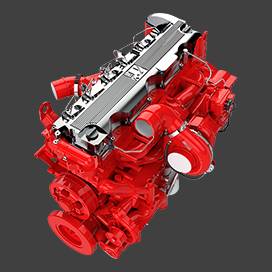Nov . 13, 2024 10:50 Back to list
what is a brake drum
What is a Brake Drum?
A brake drum is a crucial component of the braking system in many vehicles, particularly those with drum brakes. These systems are commonly found in older cars and trucks, although some modern vehicles also utilize them, especially on the rear wheels. Understanding the role and function of a brake drum is essential for anyone interested in automotive mechanics or vehicle safety.
Structure and Function
A brake drum is a cylindrical component that houses the braking mechanism. It is typically made from cast iron or aluminum, designed to withstand the high temperatures and stresses experienced during braking. The inner surface of the drum is smooth and provides a surface for the brake shoes to press against when braking is applied.
The basic operation of a drum brake system involves several components the brake drum itself, brake shoes, a wheel cylinder, and various springs and hardware. When the driver presses the brake pedal, hydraulic fluid is transmitted to the wheel cylinder, causing it to expand. This expansion forces the brake shoes outward against the inner surface of the drum. The friction generated between the shoes and the drum slows down the vehicle, allowing it to stop effectively.
Advantages and Disadvantages
Brake drums have distinct advantages and disadvantages compared to their counterpart, disc brakes. One of the primary advantages of drum brakes is that they provide more effective braking force during slower speeds or when carrying heavier loads. They also tend to be more effective at retaining braking power over a prolonged period, as the drum design allows for better heat dissipation.
what is a brake drum

However, there are some drawbacks to drum brakes. They are generally heavier than disc brake systems, which can impact a vehicle's overall performance and fuel efficiency. Additionally, drum brakes are more susceptible to heat fade, where the effectiveness of the brakes diminishes as they heat up, especially during extended braking periods. Furthermore, maintenance and servicing can be more complex, as drum brakes require a more thorough inspection and adjustment mechanism compared to disc brakes.
Maintenance and Care
Regular maintenance of brake drums is essential for ensuring safety and reliability on the road. This includes periodic inspections to check for wear and tear, as well as replacing brake shoes when they become worn down. Mechanics often recommend having the brakes inspected during routine vehicle maintenance to catch any issues early.
Additionally, if a driver notices signs such as grinding sounds, reduced braking efficiency, or vibrations when applying the brakes, it may indicate a problem with the brake drum or the associated components. In such cases, immediate attention is necessary to avoid potential accidents.
Conclusion
In summary, a brake drum plays a vital role in a vehicle's braking system, providing the necessary friction to slow down or stop the vehicle. While they offer specific advantages, they also come with potential downsides that can affect performance and maintenance. Understanding how brake drums function and their importance in vehicle safety will better inform drivers and car enthusiasts alike, ensuring safer driving experiences. Regular maintenance and attention to this component can prevent costly repairs and enhance overall vehicle safety, making it an integral part of automotive knowledge.
-
Your Brake Drum Man: Quality & Performance Parts
NewsAug.21,2025
-
Explore Japan: Ultimate Travel Guide & Authentic Experiences
NewsAug.19,2025
-
Your Brake Drum Man: Premium & Reliable Brake Drums for Sale
NewsAug.18,2025
-
ROR Web Development: Build Fast, Scalable, Secure Apps
NewsAug.17,2025
-
Scania Brake Drums: OEM Quality for Optimal Safety & Durability
NewsAug.16,2025
-
R.V.I: Advanced Remote Visual Inspection for Precision
NewsAug.15,2025
